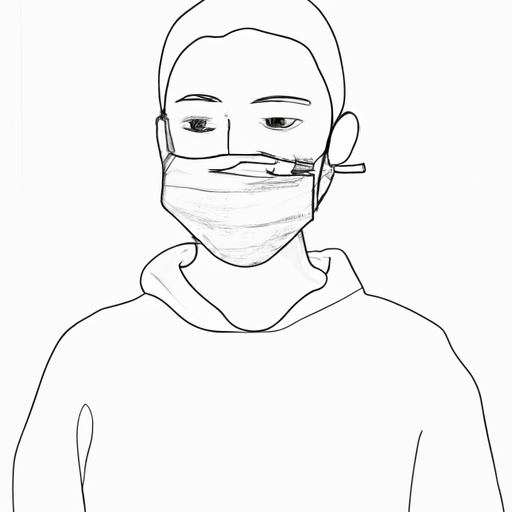Flu season is a notorious time of year, bringing with it a host of unpleasant symptoms and health concerns. Understanding the flu, from its symptoms and causes to its diagnosis, is crucial for effectively managing and preventing its spread. In this article, we will delve into the intricacies of the flu, exploring its symptoms, causes, and diagnosis in the first section. Moving on, we will discuss various treatment options and preventive measures that can help manage the flu and minimize its impact on our daily lives. Finally, we will provide valuable tips for staying healthy during flu season, as well as recognizing the early warning signs that should prompt immediate medical attention. By equipping ourselves with knowledge and taking the necessary precautions, we can navigate flu season with confidence and protect ourselves and our loved ones from its potentially severe consequences.
1. "Understanding the Flu: Symptoms, Causes, and Diagnosis"
The flu, also known as influenza, is a highly contagious viral infection that affects the respiratory system. It is important to understand the symptoms, causes, and how it is diagnosed in order to effectively manage and treat this illness.
Symptoms of the flu typically include a sudden onset of fever, body aches, fatigue, cough, sore throat, nasal congestion, and headaches. Some individuals may also experience gastrointestinal symptoms such as nausea, vomiting, and diarrhea. These symptoms can range from mild to severe and can last for several days to a few weeks.
The flu is caused by influenza viruses, which are constantly evolving. There are three main types of influenza viruses: A, B, and C. Influenza A and B viruses are responsible for seasonal flu outbreaks that occur every year, while influenza C viruses generally cause mild respiratory illnesses. The flu is primarily spread through respiratory droplets when an infected person coughs, sneezes, or talks. It can also be transmitted by touching contaminated surfaces and then touching the mouth, nose, or eyes.
Diagnosing the flu can be done through clinical evaluation and laboratory testing. Healthcare professionals will consider the symptoms, medical history, and physical examination of the patient. Rapid influenza diagnostic tests (RIDTs) can also be used to detect influenza viral antigens in respiratory specimens. However, these tests may not always provide accurate results, and further laboratory testing, such as polymerase chain reaction (PCR), may be required for confirmation.
It is important to differentiate the flu from other respiratory illnesses, such as the common cold, as treatment approaches may vary. Antiviral medications, such as oseltamivir (Tamiflu), zanamivir (Relenza), or peramivir (Rapivab), may be prescribed to treat the flu and reduce the severity and duration of symptoms. These medications work best when taken within 48 hours of symptom onset. Rest, hydration, over-the-counter pain relievers, and fever-reducing medications can also help alleviate symptoms and promote recovery.
Prevention is key when it comes to the flu. Annual vaccination is recommended for everyone above the age of six months. The flu vaccine helps to protect against specific strains of influenza viruses that are predicted to circulate in each flu season. Additionally, practicing good hygiene habits, such as frequent handwashing, covering the mouth and nose when coughing or sneezing, and avoiding close contact with sick individuals, can help prevent the spread of the virus.
In conclusion, understanding the symptoms, causes, and diagnostic methods for the flu is crucial for effective management and treatment of this common viral infection. By
2. "Managing the Flu: Treatment Options and Preventive Measures"
The flu, also known as influenza, is a highly contagious respiratory illness caused by influenza viruses. It affects millions of people worldwide each year, leading to severe illness, hospitalizations, and even fatalities. While the flu can be debilitating, there are various treatment options available to manage the symptoms and prevent its spread.
One of the primary goals of flu treatment is to alleviate symptoms and reduce the duration of illness. Over-the-counter medications such as pain relievers, fever reducers, and cough suppressants can help relieve discomfort and manage symptoms. However, it is crucial to consult a healthcare professional before taking any medication, especially for children, pregnant women, and individuals with underlying health conditions.
Antiviral medications are another effective treatment option for the flu. These prescription drugs can help reduce the severity and duration of illness if taken within the first 48 hours of symptom onset. Antivirals work by inhibiting the growth and spread of the influenza virus in the body. They are particularly beneficial for individuals at high risk of complications, such as the elderly, young children, pregnant women, and those with chronic medical conditions.
In addition to medical treatment, there are several self-care measures that can be taken to manage the flu. Getting plenty of rest is essential as it allows the body to fight off the virus more effectively. Staying hydrated by drinking fluids like water, herbal tea, and clear soups can help prevent dehydration caused by fever and respiratory symptoms. Using a humidifier or taking steamy showers can ease nasal congestion and soothe irritated airways.
Preventive measures play a crucial role in managing the flu and preventing its spread. The most effective preventive measure is getting an annual flu vaccine. The vaccine helps the body develop immunity against the most prevalent strains of the virus, significantly reducing the risk of infection. It is recommended for everyone above the age of six months, particularly those at high risk of complications.
Practicing good respiratory hygiene is also vital in preventing the flu. Covering the mouth and nose with a tissue or elbow when coughing or sneezing can prevent the spread of infected respiratory droplets. Regularly washing hands with soap and water for at least 20 seconds, or using an alcohol-based hand sanitizer, can help eliminate the virus from the hands and reduce the risk of transmission.
Furthermore, avoiding close contact with infected individuals and staying home when experiencing flu-like symptoms can prevent the spread of the virus to others. It is important to remember that individuals infected with the flu can transmit the virus to others even before symptoms appear. Therefore, taking preventive measures and practicing good hygiene habits are crucial in managing the flu and protecting vulnerable populations.
In conclusion
3. "Navigating Flu Season: Tips for Staying Healthy and Recognizing Early Warning Signs"
With the arrival of flu season, it is crucial to take necessary precautions to stay healthy and recognize the early warning signs of the flu. In order to navigate this challenging time, here are some essential tips to follow:
1. Vaccination:
Getting a flu shot is the first and most effective step in preventing the flu. The vaccine is designed to protect against the most prevalent strains of the virus for the season. It is recommended to receive the flu shot annually, ideally before the start of flu season. While the vaccine may not guarantee complete immunity, it significantly reduces the severity and duration of the illness if contracted.
2. Hand and Respiratory Hygiene:
Maintaining proper hand hygiene is crucial in preventing the transmission of the flu virus. Regularly wash your hands with soap and water for at least 20 seconds, especially after using the restroom, before eating, and after coughing or sneezing. If soap and water are not available, use an alcohol-based hand sanitizer.
Respiratory hygiene plays a vital role in preventing the spread of the flu. Cover your mouth and nose with a tissue or the crook of your elbow when coughing or sneezing. Dispose of used tissues properly and avoid touching your face, as this can aid in the transmission of the virus.
3. Avoid Close Contact:
During flu season, it is advisable to avoid close contact with individuals who are sick. If you are experiencing flu-like symptoms, it is essential to stay home from work or school to prevent the spread of the virus to others. Social distancing measures can significantly reduce the chances of contracting the flu.
4. Maintain a Healthy Lifestyle:
A strong immune system can help fight off the flu virus more effectively. Ensure you maintain a balanced diet, rich in fruits and vegetables, to provide essential vitamins and minerals to support your immune system. Regular exercise, adequate sleep, and stress management techniques are also crucial in keeping your immune system strong.
5. Recognizing Early Warning Signs:
Recognizing the early warning signs of the flu can help in seeking prompt medical attention and initiating appropriate treatment. Common symptoms of the flu include sudden onset of fever, chills, cough, sore throat, muscle or body aches, fatigue, and headache. Some individuals may also experience nasal congestion or runny nose. If you experience these symptoms, consult a healthcare professional for further evaluation and guidance.
In conclusion, flu season can be challenging, but by following these tips, you can increase your chances of staying healthy and minimizing the impact of the flu. Vaccination, practicing proper hand and respiratory hygiene, avoiding close contact with sick individuals, maintaining a healthy lifestyle, and recognizing early warning signs



